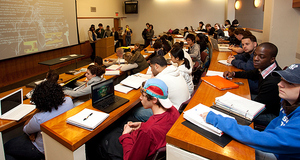Featured Article:Wake Up and Smell the Condoms: An Analysis of Sex Education Programs in the United States, the Netherlands, Sweden, Australia, France, and GermanySexual health clinics follow specific guidelines to assure that they are accessible to youth. These guidelines require that clinics accept teen sexuality and sexual behavior, guarantee anonymity, waive Pap smear and pelvic exams for initial contraceptives, provide nonjudgmental service, and require minimal paperwork and no parental consent (Lottes, 2002). Youth in Sweden also fair significantly better on many measures of sexual health than youth in the United States. Sweden has a teen birth rate of 7 per 1000, which is lower than the US, France, Canada, and Great Britain (Darroch, Singh, & Frost, 2001). The rate teens who neglected to use contraception at most recent intercourse was only 7% in Sweden, compared to 20% in the US (Darroch et al., 2001). Sweden also has a lower teenage abortion rate than the US: 17.2 per 1000 in Sweden versus 29.2 per 1000 in the US (Singh & Darroch, 1999). Sex education has been mandatory for all students in Sweden since 1955 (Lottes, 2002). Sex education in preschool years has been mandatory since 1956 (McConaghy, 1979). All teachers are trained in sex education as part of their teacher training (McConaghy, 1979). Swedish sex education focuses on providing honest answers to student questions (McConaghy, 1979). The ethical principles of Swedish sex education are below, as quoted from the Swedish National Board of Education:
Overall, Sweden supports an open and liberal approach to sex education encouraging responsibility and respect towards others. In addition to their sex education programs, Sweden supports the sexual health of their youth with a network of free clinics run by midwives, gynecologists, and social health workers that provide free abortion without parental consent and access to cheap oral contraceptives. Australia is the third country I will focus on that fairs significantly better than the US on many measures of adolescent sexual health. The birth rate for teens ages 15-19 in Australia is 40.5 per 1000, significantly less than the rate for US teens (112.4 per 1000)1 (Weaver et al., 2005). Australian teens ages 15-19 have an abortion rate of 3.9 per 1000, compared to 30.2 per 1000 for US teens. Ninety percent of Australian males and ninety-five percent of Australian females report having used contraception at first intercourse (Weaver et al., 2005) . It is clear that Australian teens tend to make healthier choices regarding sexual activity than American teens. Recognizing the health risks for teens who do not receive adequate sex education, in 1988 the Australian government called for a sex education program that was “‘honest, explicit, and comprehensive’ and ‘realistic in its assumptions about the attitudes, skills and behaviors of young people’” (Peppard, 2008). In 1999 the government published Talking Sexual Health, encouraging a sex education model that emphasized how social constructions of gender and power affect young people in regard to sexuality and emphasizing sexual diversity. Talking Sexual Health was endorsed by all Australian states and territories (Peppard, 2008). Talking Sexual Health endorses a sex education curriculum that includes units about drugs, sex, and health, knowledge and action, addressing diversity, and exploring power dimensions in sexual relationships (Australian Research Centre in Sex, Health and Society, 1999). Australians implement sex education programs that use a whole school approach, accept young people as sexual beings, provide students with skills to control and enjoy their sexuality, cater to the sexual diversity of all students, and provide appropriate and comprehensive curricula pertaining to personal decisions and behaviors, sexual health, diversity, and social justice (Weaver et al., 2005) . Overall, Australia takes a comprehensive approach to sex education with a strong emphasis on diversity that I haven’t seen in my research of any other country. Unfortunately, I could not find information on public health policies that supplement sex education in Australia. Next, I will examine sex education and sexual health policies in France. Youth in France fair well on most measures of sexual health. The teen birth rate in France is 22 per 1000 (compared to 122.4 per 1000 in the US) and the teen abortion rate is 13.2 per 1000 (compared to 30.2 per 1000 in the US) (Weaver et al., 2005) . The French gonorrhea rate is 74 times less than that of the US and the Chlamydia rate is 20 times less (Weaver et al., 2005) . Twice as many women in the US begin having sexual intercourse before age 15 than in France (14% and 7%, respectively) (Darroch et al., 2001). French women also have fewer sexual partners than American women, with only 13% of women ages 18-19 having more than two sexual partners in the past year compared to 49% of their US counterparts (Darroch et al., 2001). Only 12% of French women reported neglecting birth control at their most recent intercourse; 20% of US women did (Darroch et al., 2001). All French schools are required to provide sex education. In 1996, the federal government mandated that students ages 12-14 spend at least two hours in sex education classes. Parents may exempt children from sex education classes in schools, but all students over age 13 must attend mandatory 20 to 40 hours of sex education workshops over a four year period (Weaver et al., 2005) . French sex education often starts with questions raised by students and is led by student interest. Curricula focus on biological sexual maturation, reproduction, STD prevention, and contraception (Weaver et al., 2005) . Biology teachers cover the biological aspects of development, including reproductive anatomy, and often invite community specialists to speak to students on more expansive topics (Berne & Huberman, 1999) . Schools, the media, and community organizations all work together to encourage and enable healthy sexual behavior among youth (Berne & Huberman, 1999) . France supplements its sex education programs with public policies that provide teens with access to condoms and contraception. National health insurance in France covers all reproductive health services and condoms are provided free and confidentially to anyone under age 18 (Berne & Huberman, 1999). Abortion is free and legal through the tenth week of pregnancy (Berne & Huberman, 1999). One unique aspect of French sexual health policy is “Free Wednesdays”. All students have Wednesday afternoons off from classes, and family planning clinics cater to teens during these times (Berne & Huberman, 1999) . The final country I will examine is Germany. Germany has an teen abortion rate of only 3.6 per 1000 and a teen birth rate of only 12.5 per 1000 (US rates are 29.2 per 1000 and 54.4 per 1000, respectively) (Singh & Darroch, 1999) . Germany’s gonorrhea rate is also 25 times less than that of the US (Berne & Huberman, 1999). There is no national curriculum for sex education in Germany. The German government allocates responsibility to schools, community-based organizations, and health authorities to develop appropriate sex education programs, with the requirement that the programs be comprehensive and address a wide range of ages and target groups (Berne & Huberman, 1999). The Federal Center for Health Education is specifically responsible for developing sex education concepts geared toward individual age and social groups and providing uniform educational materials to school, vocational training counselors, and counseling centers (Berne & Huberman, 1999). German sex education is approached in a positive, non-repressive context and led by dialogue that gradually introduces sexuality to students and presents sex as a positive expression of emotion or tenderness in a relationship (Berne & Huberman, 1999). German sex education strives to provide students with information about physical aspects of sexuality, an understanding of individual sexual development, personal identity, gender roles, and relationships, information on how to develop a healthy sexual life, educational information on pregnancy and prenatal life, awareness of other lifestyles, and a comprehensive understanding of sexually transmitted diseases and how to reduce risk. German sex education is designed to motivate students to use protection from pregnancy and STDs, make conscious responsible decisions about sexuality and relationships, and accept and tolerate different lifestyles. German sex education helps students become competent in communication regarding relationships, family planning, and STD protection and teaches students to take an active role in intimacy and sexual encounters (Berne & Huberman, 1999) . German sexual health is not only a result of their sex education, but of public policies that support the sexual health of all citizens. Ninety percent of German households have compulsory health insurance, while 10% of households with the highest incomes have access to private insurance (Berne & Huberman, 1999) . Oral contraceptives, IUDs, barrier methods, and sterilization are covered by insurance and offered free to women under age 20. National health insurance also covers abortion, which is legal during the first trimester, but parental consent is required for women under age 18 (Berne & Huberman, 1999). Condoms are easily accessible and can be found in pharmacies, grocery stores, restaurants, clubs, and vending machines in public restrooms (Berne & Huberman, 1999) . The German people view sexual expression as a basic need and a normal, healthy part of human development, and their public policies support this view. Clearly, the US is failing at providing adequate sexual education and health services to our youth. The Netherlands, Sweden, Australia, France and Germany outperform the US dramatically in measures of teen sexual health. Each of these countries offers comprehensive, non-judgmental sex education in their schools and supplementary social programs to provide sexual health services to youth. The US should look to these countries for inspiration. However, it is important to note that concepts of sexuality vary vastly among cultures. Effective sex education programs must be culturally appropriate (Labauve & Mabray, 2002) . Simply adapting the policies of another country would not solve United States’ sexual health problems. In fact, due to the incredible cultural variations between states and regions in the United States, I would suggest that the implementation of a single, national sex education curriculum would also be ineffective. Comprehensive sex education, starting in elementary school and continuing throughout high school, should be mandatory in schools across the country, but it should be up to individual states to develop a curriculum that meets the specific needs of its population. Comprehensive sex education programs in the US should be based in theory and research and target at-risk populations. As stated by Schaalma et. all (2004): “Health promotion planners need to identify theory- and evidence-based methods that have proven, or are likely to, be effective in changing behavior, and they need to translate these methods into educational strategies and materials that fit target populations” (Schaalma, Abraham, Gilmore, & Kook, 2004). Health promotion planners should look to the countries reviewed earlier in this paper for examples of methods that have proven to be effective and translate them to meet the needs of different US populations. All teachers should be trained in sex education while pursuing their teaching degrees. Teachers who already have their degrees and are currently teaching should be required to attend sex education seminars to provide them with skills for addressing sex education topics in the classroom.Continued on Next Page » Suggested Reading from Inquiries Journal
Inquiries Journal provides undergraduate and graduate students around the world a platform for the wide dissemination of academic work over a range of core disciplines. Representing the work of students from hundreds of institutions around the globe, Inquiries Journal's large database of academic articles is completely free. Learn more | Blog | Submit Latest in Health Science |


















